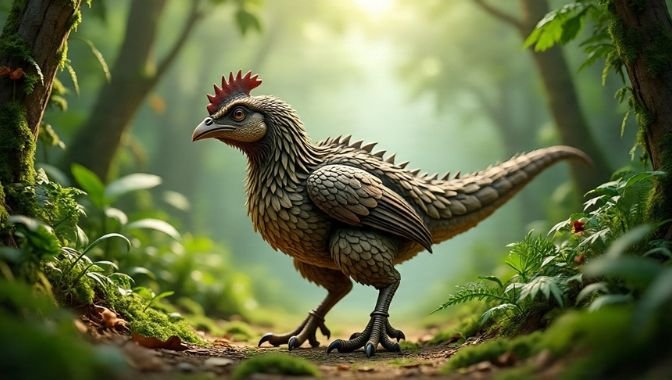When we think about dinosaurs, massive creatures like the Tyrannosaurus rex or the towering Brachiosaurus come to mind. But what if I told you that one of their closest living relatives is not some giant reptile hiding in a remote jungle, but something much more familiar, the humble chicken?
A 60% DNA Match With Dinosaurs
Scientists have discovered that chickens share about 60% of their DNA with dinosaurs, particularly the theropod group, which includes the T. rex. This connection isn’t just a fun trivia fact; it is strong genetic evidence showing that birds are direct descendants of these prehistoric giants. In fact, paleontologists consider birds to be modern-day dinosaurs, having evolved over millions of years to adapt to new environments and survive mass extinctions.
The Evolutionary Journey
Fossil records reveal striking similarities between ancient theropods and today’s chickens, from their hollow bones and three-toed feet to their nesting behavior. Over time, traits that once helped dinosaurs hunt, run, or defend themselves transformed into features that aid modern birds in flying, feeding, and adapting to diverse habitats.
Also read Hackers Target Pakistan in Wave of Sophisticated Cyberattacks
From Roars to Clucks
While we may never hear the exact sounds dinosaurs made, studies of bird vocalizations help scientists understand how prehistoric creatures might have communicated. The chicken’s familiar cluck is a far cry from a T. rex roar, yet both serve a similar purpose, to warn, attract, or comfort members of their species.
This genetic link between chickens and dinosaurs isn’t just fascinating; it teaches us about survival and adaptation. It reminds us that life on Earth is deeply interconnected, and even the most ordinary creatures have extraordinary histories written in their DNA.
In other words, the next time you see a chicken, you’re looking at a living, breathing descendant of the dinosaurs, proof that evolution works in mysterious and remarkable ways.











